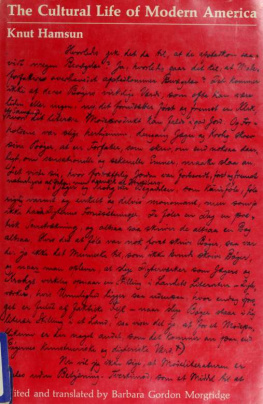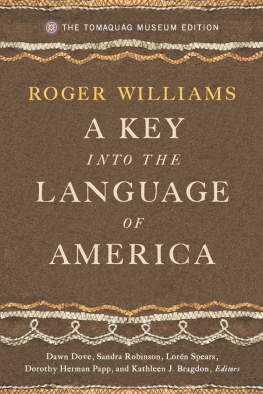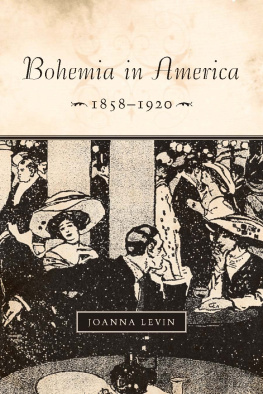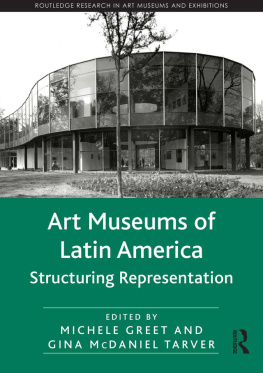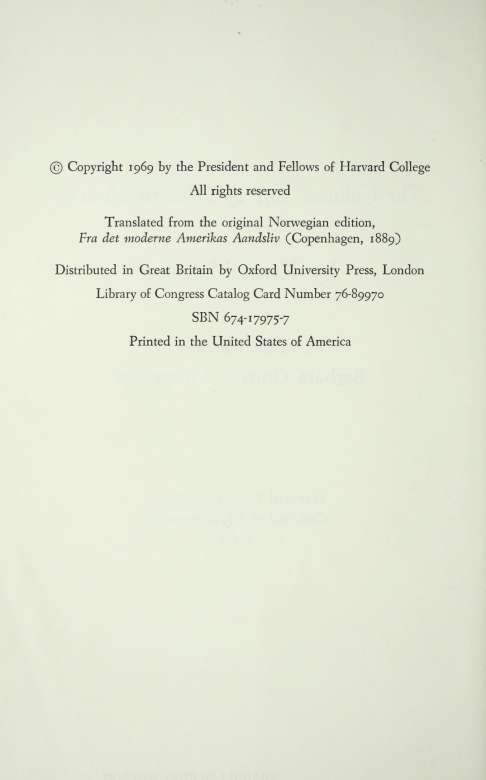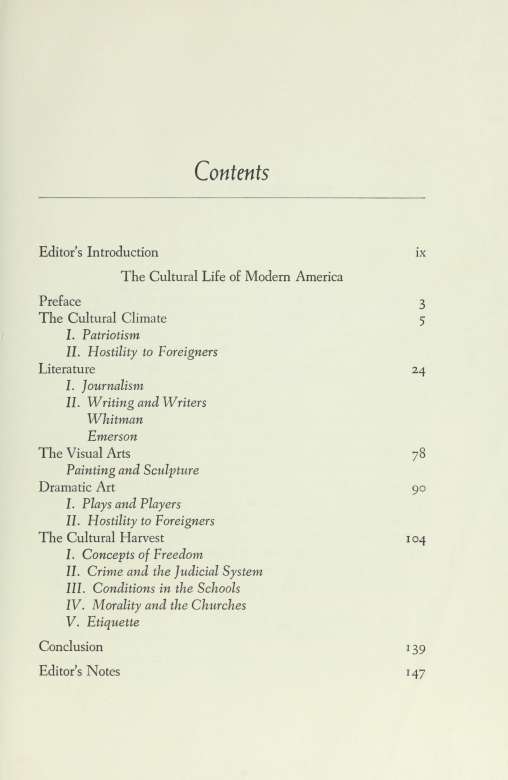This book made available by the Internet Archive.
Editor s Preface
With minor modification, the present translation is a literal rendering of the original Copenhagen edition of Fra det moderne Amerikas Aandsliv published in 1889. (For a detailed discussion of the treatment of the text, see the prefatory comment to the editors notes.) When A. Cammermeyer became Hamsuns publisher in 1898, the firm purchased from Det Nordiske Forlag (Philipsen) the remaining copies of seven Hamsun works, including Aandsliv. These books were given a new title page showing the Oslo publisher and then sold to subscribers either separately or together with Cammermeyers own editions of Victoria and Suit under the title Skrifter , which were issued in seventy installments.
The completion of this book is above all a tribute to friends and colleagues, to all of whom I gratefully acknowledge my dependence. I am immeasurably indebted to Einar Haugen of Harvard University, both for his patient encouragement throughout the stages of its preparation as well as for the unfailing guidance of his knowledge and scholarship. The errors that remain in meaning and interpretation are, needless to say, my own. My gratitude is also due Miss Mary MacDonald, chief of the Research and Reference Section of the Illinois State Library; the librarians of Everett Community College for their help with research materials; and the American-Scandina-vian Foundation, whose fellowship provided me with an opportunity to study in Oslo, during the summer of 1966. In conclusion, I wish
VI
Editors Preface
to thank my longtime friend and teacher, Sverre Arestad of the University of Washington, whose exhilarating dedication to Norwegian literature and unself-serving commitment to teaching and the student were at once the inspiration of my graduate studies and the seminal impulse for my interest in Knut Hamsun.
Edmonds , Washington March 1969
B. G. M.


Editors Introduction
When in 1885 the twenty-six-year-old Knut Hamsun declared the author of The Innocents Abroad an ill-qualified critic of European political institutions and cultural attainment, he was basing his judgment on the defects of sensitivity and perception that sprang from Twains naively nationalistic insularity, his aesthetic ignorance, and his undeveloped, democratic view of life. Not, Hamsun readily conceded, that the account of the five-month pleasure trip through the Mediterranean to the Holy Land was uninspired or less entertaining than Twains other books: his observations were in fact full of humor and caprice, of clever whims and brilliant paradoxes. 1 Nevertheless, as he also pointed out, the role of successful continental critic required qualifications other than Twains energy and natural healthy instincts. But who, the uninitiated reader may well ask, was Knut Hamsun? And what was the nature of his expectations, his personal outlook, and experience when four years later he undertook a broad and self-confident assessment of the cultural performance of late nineteenth-century America and the values, national characteristics, customs, and institutions that undergirded the nations so-called achievements?
The Mark Twain essay itself was published during the brief interval between Hamsuns two sojourns in the United States; the
1 Mark Twain, Ny lllustreret Tidende, April 5, 1885, p. no. All trans-tions in the introduction are by the editor.
X
Editors Introduction
first lasted from the beginning of 1882 until late 1884, the second from September 1886 to June 1888. Although the detailed record of these years prior to Hamsuns literary breakthrough in the 1890s has been the subject of some controversy, notably between Hamsun and his unsolicited but persistent biographer Rasmus B. Anderson, the outline of events is reasonably clear. Their beginning was in league with the times. During his unsuccessful effort to advance a literary career, Hamsun had already pursued an unstable livelihood as postal clerk and tutor, itinerant peddler, and road construction worker before he joined the large national migration to America to aid his personal fortunes. This exodus, initiated in 1825 by a small band of religious dissidents from Stavanger, had later burgeoned into the tens of thousands, until in the peak years of 1881-1885 the rate was second only to Irelands in the percentage of total population and by 1915 totaled 754,561 emigrantsa figure in excess of four fifths of the national census of 1801. 2 Most of these emigrants were cotters and day laborers, displaced and dispossessed by Norways transformation from an agrarian society to a modern industrial state; in external circumstance they were not unlike Hamsun himself, who was a poor farm youth from the northern province of Nordland.
But if the majority of emigrants were poor and inarticulate, although their America letters had an enormous impact on their families and friends at home, there were a number of prominent Norwegians, educated, influential, and able to reach a wider audience, who also came to the United States in these years. Some, like the Unitarian minister Kristofer Janson, were impelled by religious convictions; others, like Bj0mstjerne Bj0mson, came briefly in search of first-hand observation and knowledge. One, the noted violinist Ole Bull, had even attempted in the 1850s to establish a Norwegian colony in Pennsylvania. The most widely attended, however, was Bj0rnsonpoet, dramatist, novelist, and passionate de
2 For a comprehensive treatment of Norwegian population and immigration statistics, see Theodore C. Blegen, Norwegian Migration to America , 1825-1860 (Northfield, Minnesota: The Norwegian-American Historical Association, 1931), pp. 4-23.
Editors Introduction
xi
fender of the democratic cause of nineteenth-century Norwegian liberalism, who spent eight months in America in late 1880-81. His interest had been fostered in part by his republican sympathies, his extensive interest in improved economic, political, and educational opportunities for the Norwegian cotter as well as his belief in parliamentary government. He also had close personal contact with Janson, who was a sometime neighbor; Rasmus Anderson; and Ole Bull, w T hose American widow, Sara Thorp Bull, invited him to visit the Thorp home in Massachusetts. Here Bjprnson was introduced to the leading academic and literary figures in and about Cambridge, Longfellow, Whittier, and Emerson among them, before undertaking a strenuous and widely publicized lecture tour through the midwestem Norwegian settlements from Chicago to Fargo, North Dakota. Throughout these travels, his experiences and often enthusiastic observations and impressions were circulated in diary letters to the Norwegian Liberal pressa factor not irrelevant to Hamsun's subsequent views on American life and letters.

